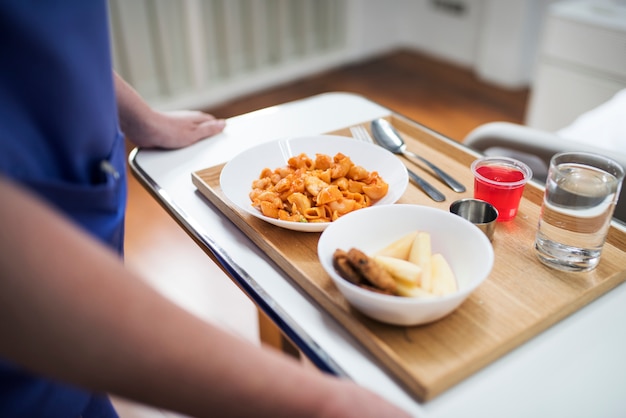Maintaining stable blood sugar is essential for long-term health, energy, and disease prevention—especially for people managing chronic conditions like back pain. Emerging evidence shows that a low-carbohydrate approach can significantly improve glucose control, even without medication. The best part? You don’t need intense workouts or complicated routines. With a few small, sustainable habits, you can support metabolic health while staying gentle on your body.

Blood sugar fluctuations affect everyone—not just those with diabetes. Poor glucose regulation can lead to fatigue, brain fog, weight gain, and inflammation, all of which may worsen chronic back pain. High blood sugar over time contributes to insulin resistance, a precursor to type 2 diabetes and cardiovascular disease.
A 2023 study highlighted that a low-carb diet helped individuals with pre-diabetes reduce blood glucose levels naturally. This makes dietary strategies especially valuable for those looking to avoid medication or reduce reliance on it.
Carbohydrates are the primary driver of blood sugar spikes. By reducing carb intake—especially refined grains and sugars—you minimize glucose surges and insulin demands. Instead, your body shifts to using fat for fuel, a state known as mild ketosis, which promotes more consistent energy and reduced inflammation.
Importantly, low-carb doesn’t mean no-carb. Focus on fiber-rich vegetables, nuts, seeds, and modest amounts of fruit. These provide essential nutrients without destabilizing glucose.
Skip the toast or cereal. Instead, begin your morning with a low-carb, high-protein meal like eggs with avocado and spinach. Protein and fats slow glucose absorption and prevent the mid-morning crash.
A study published in Healthline noted that meals rich in protein and fiber help maintain steady insulin levels. This is crucial for people with back pain who may have limited mobility—stable energy supports consistent movement and reduces sedentary behavior.

Fiber slows carbohydrate digestion and blunts blood sugar spikes. Aim to fill half your plate with non-starchy vegetables like broccoli, zucchini, kale, and bell peppers.
According to Everyday Health, many people on low-carb diets overlook fiber, which can lead to digestive issues and reduced satiety. Including high-fiber plants ensures gut health and long-lasting fullness—key for weight management, which can relieve pressure on the spine.
Physical activity increases insulin sensitivity, helping your cells absorb glucose more efficiently. But if back pain limits your mobility, opt for low-impact routines: short walks, seated stretches, or water-based exercises.
Just 10–15 minutes of daily movement can make a difference. A walk after meals, for example, has been shown to lower post-meal glucose spikes. No need for intense workouts—consistency matters more than intensity.
When reducing carbs, your body sheds excess water and electrolytes like sodium, potassium, and magnesium. Dehydration can mimic fatigue and muscle cramps—symptoms that may be mistaken for worsening back pain.
Drink plenty of water and include electrolyte-rich foods: leafy greens (magnesium), avocado (potassium), and salted broths (sodium). This simple habit supports both metabolic and musculoskeletal health.
Eating slowly and recognizing fullness cues can prevent overeating and glucose overload. Try eating without distractions—no screens, no rushing.
Some people also benefit from time-restricted eating, such as consuming meals within an 8–10 hour window. This approach may improve insulin sensitivity and support weight loss, indirectly reducing strain on the lower back.
Even with good intentions, people make missteps. Everyday Health warns against cutting carbs while neglecting fiber, hydration, or professional guidance. Others may overconsume processed 'low-carb' snacks high in unhealthy fats or additives.
Focus on whole, minimally processed foods. Work with a healthcare provider if you're on medication, as blood sugar improvements may require dosage adjustments.
Balancing blood sugar doesn’t require drastic measures. With simple, low-impact habits—like eating protein first, adding fiber, moving gently, and staying hydrated—you can support metabolic health while managing back pain.
The low-carb approach is not a one-size-fits-all solution, but for many, it offers a practical, evidence-based path to better energy, reduced inflammation, and improved quality of life. Start with one habit, build consistency, and let small wins lead to lasting change.

Health

Health

Health

Health

Wellness

Health

Health

Health

Health

Health

Health

Wellness

Health

Fitness

Health

Health